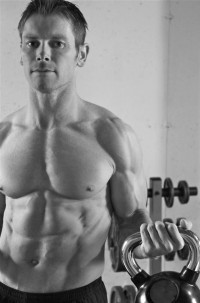Fitness
Resistance Training
Resistance Training or “weight training,” whatever you want to call it, I love it (remember, body weight exercises such
as lunges, chin-ups, and push-ups count as resistance training too)! And the clients I work with love it as well. If you haven’t embraced resistance training yet, you are missing out. With an infinite number of exerices you can perform, as well as a number of different set and rep schemes, it never gets boring. There are so many benefits of resistance training! Lets briefly go over a few of these benefits.
-Increased strength, power, speed, and size.*** Resistance training can improve sports performance and help reduce the chance of injury when on the court or field.
-Increased metabolic rate, an important factor in losing or maintaining weight. Resistance training can be a great tool for fat loss.***
-Resistance training has been shown to slow down or even reverse the aging process.
-Reduce the risk of osteoporosis – which is a condition of accelerated bone mineral loss and increases the chance of fractures. This is a condition more common in women, but men can get osteoporosis as well.
This list could get rather long. So I’ll leave it there for now. To get more information on resistance training, be sure to check out the category under training.
*** Using resistance training as a tool to either burn fat, or build muscle, greatly depends on your nutrition plan. Speaking of nutrition, that’s up next…
Nutrition
Nutrition, nutrition, nutrition, man is this important! No matter how great your resistance training and cardio program is, you will NOT achieve the physique you want if you don’t take your nutrition seriously. As they say, “you can’t out-train poor eating habits.” Even if you are the hardest worker in regards to your training, you will be spinning your wheels if your eating habits don’t improve.
Losing fat is the goal of most people out there. And those that dial-in their nutrition plan can see almost magical results. There are also some of you looking to gain size. Gaining muscle takes a calorie surplus. And if you want to put on muscle without adding a bunch of fat to your body in the process, you must consume a lot of clean food. Whether you are looking to lose fat, or gain muscle, we’ll cover what to eat, how much to eat, and when to eat it.
Yes, all of us guys want six-pack abs and all of you ladies want nice lean legs. But lets not forget the biggest benefit of cleaning up our nutrition plan; our health. To live a long healthy life, once again, nutrition is king. I’ll be updating posts under the category “nutrition,” found here.
Cardio
Time to talk cardio. To me, there seems to be 2 “type” of people out there; those that do nothing but cardio, and those that equate the idea of cardio to a 4-letter word. For the former, good for you, I’m glad that you are getting your cardio in, but please embrace resistance training as well. Pretty please. For the latter, it’s time for you to step up and start to incorporate some fat burning, heart pumping cardio into your plan. For those that work with me, know that I never recommend “hamster” cardio. You know, the type of cardio where you hop on the treadmill for a long, boring jog. No, no, none of that in my dojo! (one exception, if you absolutely love doing that, go for it, but most people can’t stand hamster training and won’t stick with it) I’m talking about cardio involving “complexes,” “intervals,” and “circuits.” This type of cardio is more fun, easier on the joints, and doesn’t take as long to perform. Win, win, win situation, and cardio will no longer be a 4-letter word! Now we’re talkin’!
You’ll find all the cardio information under the category, training.
Injury Prevention
Rounding out our training plan is injury prevention. While I’m certainly not calling myself a physical therapist, I definitely try to take a proactive approach to preventing injuries in my training. This means that I make sure to address the following areas with my clients;
-flexibility deficits via static stretching
-dynamic warmup to ensure sufficient mobility in the correct areas of the body
-activation work to make sure the muscles are firing and working on all cylinders
-soft tissue work with a foam roller and lacrosse ball. The best analogy I’ve heard in regards to soft tissue work is this;
“Imagine a rubber band with a knot in it. It’s not going to stretch the same as it would if there wasn’t a knot, right? Now, get the knot out and watch how it lengthens easily.” Our body basically works the same way. We won’t move as freely if we have knots all over the place impeding our movement. And the foam roller and lacrosse ball are just to tools to break up those knots.
Just like with resistance training and cardio from above, you’ll find all the injury prevention posts under the category, training.










